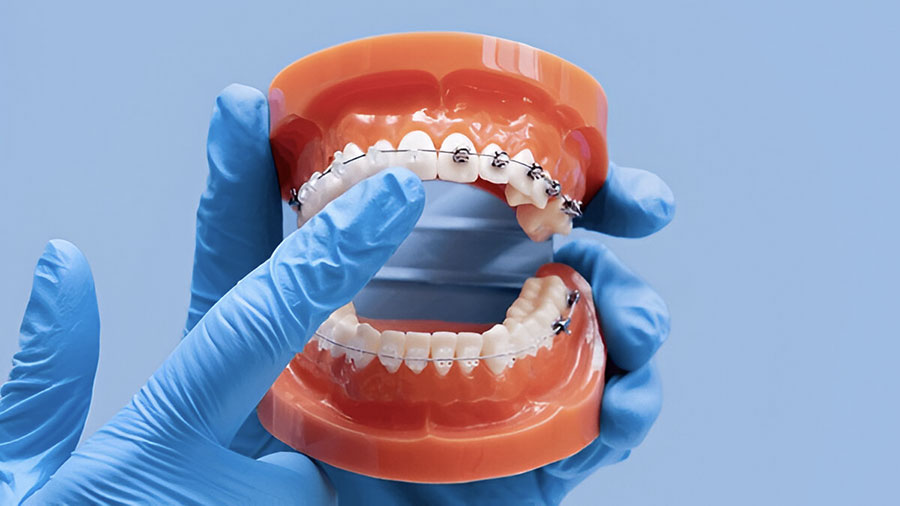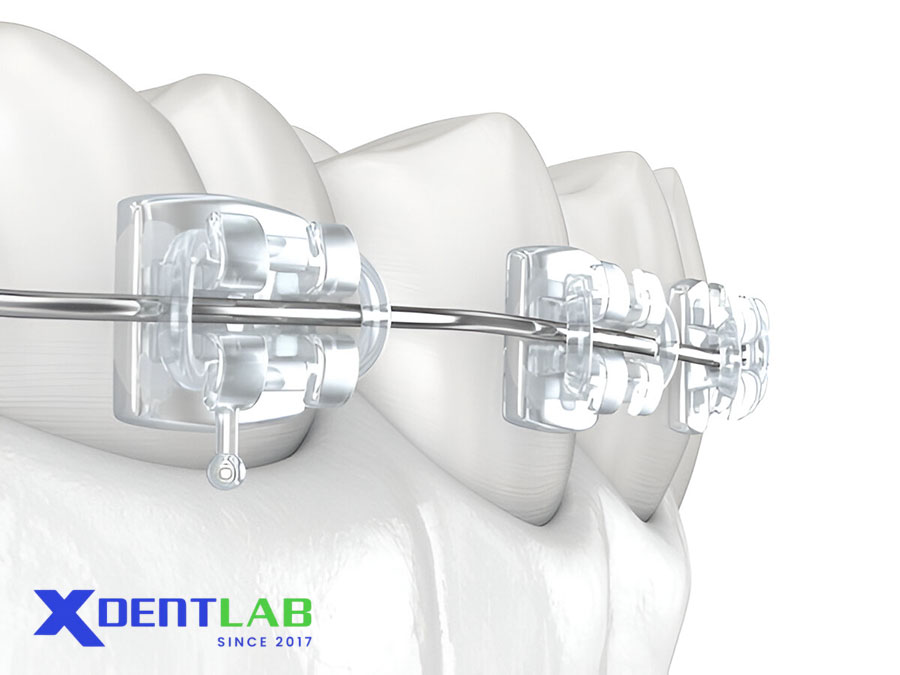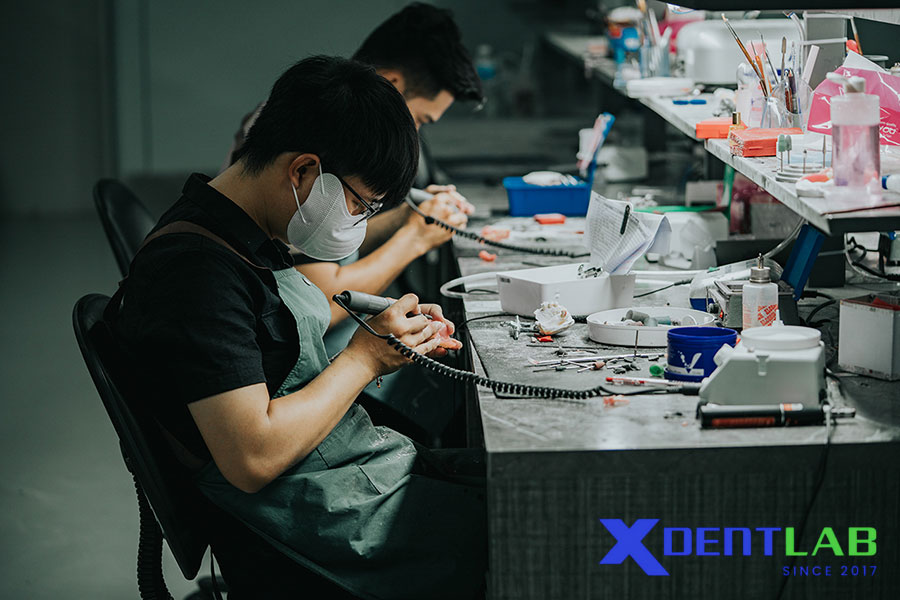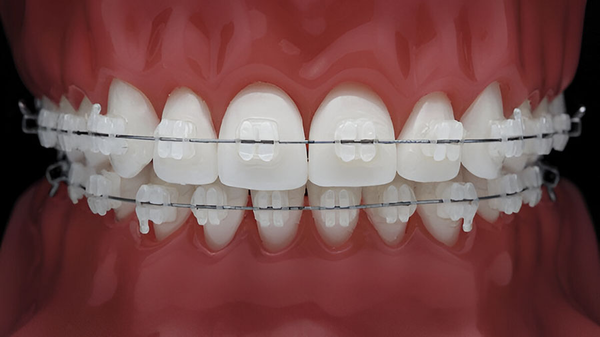Polymer brackets explained: From material composition to clinical performance, learn how these aesthetic braces are advancing orthodontics.

Table of contents [Show]
Introduction and Development
Polymer brackets, often referred to as plastic or aesthetic brackets, were created as an alternative to traditional metal brackets to meet the increasing demand for orthodontic appliances that offer better aesthetics. These brackets have undergone substantial development since their inception. Early versions of polymer brackets faced challenges such as poor color stability and insufficient mechanical properties, leading to commercial failure. However, advancements in materials science have resulted in modern polymer brackets that are more durable, reliable, and visually appealing.
Material Composition and Types
Modern polymer brackets are crafted using advanced polymeric materials designed to enhance their mechanical and aesthetic properties. Common materials include:
Polycarbonate: The most widely used material in plastic bracket manufacturing due to its transparency and affordability.
Polyurethane: Known for its improved mechanical properties, offering greater durability compared to traditional plastics.
Fiber-reinforced composites: Incorporating glass fibers or other reinforcements to significantly increase strength and reduce deformation under stress.
These materials are carefully engineered to address the shortcomings of earlier designs while maintaining aesthetic appeal.
Mechanical Properties

Strength Characteristics
Studies on modern polymer brackets reveal notable improvements in their mechanical properties compared to earlier generations:
Fracture Toughness: While still lower than metal brackets, reinforcement strategies have improved their resistance to breaking under pressure.
Hardness: Varies depending on the polymer formulation, with fiber-reinforced versions showing higher hardness levels.
Modulus of Elasticity: Lower than ceramic or metal brackets, which affects their ability to transmit forces effectively during orthodontic treatment.
Torque Capacity
The torque transmission capabilities of polymer brackets differ from those of metal brackets. Factors influencing torque capacity include:
Material composition and reinforcement.
Bracket design and slot dimensions.
Accuracy of the bracket slot.
Environmental factors, such as temperature variations in the oral cavity.
These differences necessitate careful consideration when using polymer brackets in clinical settings.
Clinical Performance
Advantages
Polymer brackets offer several benefits that make them attractive for orthodontic treatment:
Aesthetic Appeal: Their ability to blend with natural teeth makes them ideal for patients seeking discreet orthodontic solutions.
Patient Comfort: The smoother texture of polymer brackets reduces irritation to soft tissues in the mouth.
Non-metallic Composition: A suitable option for patients with metal allergies or sensitivities.
Disadvantages
Despite their advancements, polymer brackets still face challenges:
Mechanical Weakness: They are prone to fracturing under high loads.
Dimensional Instability: Over time, polymer brackets may deform due to creep or stress relaxation.
Staining: Dietary substances can cause discoloration, affecting their aesthetic appeal.
Friction: Higher frictional resistance compared to metal brackets can impact treatment efficiency.
Reinforcement Technologies
To overcome the inherent weaknesses of polymer brackets, manufacturers have introduced reinforcement strategies aimed at improving their mechanical performance.
Glass Fiber Reinforcement
The incorporation of glass fibers into polymer brackets helps to:
Enhance fracture resistance.
Improve dimensional stability.
Increase torque transmission capabilities.
Metal slot inserts within polymer brackets address issues related to creep and torque loss. Studies show that brackets with metal reinforcement exhibit:
Greater slot accuracy.
Reduced deformation under stress.
Improved consistency in torque transmission.
Stress Relaxation and Force Decay
Research has shown that polymer brackets are susceptible to stress relaxation and force decay over time. Key findings include:
Repeated loading affects their ability to maintain consistent force levels.
Temperature fluctuations in the oral environment influence material behavior.
Long-term predictability remains a challenge compared to metal or ceramic brackets.
Shear Bond Strength
The bond strength of polymer brackets is an important factor in their clinical performance. Studies indicate:
Bracket base design plays a critical role in determining shear bond strength.
Surface treatments can enhance bonding capabilities.
Bond failure patterns differ from metal brackets, with failure often occurring at the bracket-adhesive interface.
Laboratory Evaluation Standards

Modern polymer brackets undergo rigorous testing to ensure their quality and performance. Common evaluation standards include:
Slot Accuracy Measurements: Ensuring proper wire engagement for effective tooth movement.
Torque Transmission Tests: Evaluating the ability to achieve desired tooth rotations.
Frictional Resistance Assessments: Measuring sliding mechanics for efficient treatment.
Color Stability Testing: Assessing long-term aesthetic performance under oral conditions.
Recent Advancements
Current research in polymer bracket technology focuses on addressing their limitations and improving their performance. Key advancements include:
Development of new polymer formulations with mechanical properties comparable to ceramic brackets.
Enhanced color stability and stain resistance for improved aesthetics.
Better dimensional stability under oral conditions to reduce deformation.
Surface modifications to lower friction and improve hygiene.
Clinical Considerations
When selecting polymer brackets for orthodontic treatment, clinicians should evaluate several factors:
Patient Preferences: Aesthetic demands, oral hygiene habits, and dietary considerations.
Treatment Mechanics: Required force levels and treatment duration.
Bracket Design: Reinforcement features, slot accuracy, and overall durability.
Cost-Benefit Analysis: Balancing aesthetic appeal with clinical effectiveness and affordability.
Future Directions
The future of polymer bracket technology is promising, with ongoing research aimed at:
Developing biocompatible polymers with enhanced mechanical and aesthetic properties.
Integrating smart materials for controlled force delivery and improved treatment outcomes.
Innovating manufacturing techniques to ensure better quality control and consistency.
Improving surface properties to reduce friction and enhance patient comfort.
Conclusion
Polymer brackets have come a long way from their early iterations, offering a viable alternative to metal and ceramic brackets for patients seeking aesthetic orthodontic solutions. While they still face challenges related to mechanical performance and long-term stability, advancements in material science and reinforcement technologies continue to narrow the gap between polymer and traditional bracket materials.
For dental practices and orthodontic labs, understanding the strengths and limitations of polymer brackets is crucial for delivering effective and aesthetically pleasing treatment options. With XDENT LAB’s commitment to quality and compliance, dental professionals can rely on expert Lab-to-Lab services to ensure precision and consistency in their orthodontic solutions.
By leveraging XDENT LAB’s expertise in dental lab outsourcing, practices can access state-of-the-art technology and certified technicians to meet the growing demand for aesthetic and functional orthodontic appliances.
XDENT LAB is an expert in Lab-to-Lab Full Service from Vietnam, with the signature services of Removable & Implant, meeting U.S. market standards – approved by FDA & ISO. Founded in 2017, XDENT LAB has grown from local root to global reach, scaling with 2 factories and over 100 employees.. Our state-of-the-art technology, certified technicians, and commitment to compliance make us the trusted choice for dental practices looking to ensure quality and consistency in their products.

Our commitments are:
100% FDA-Approved Materials.
Large-Scale Manufacturing, high volume, remake rate < 1%.
2~3 days in lab (*digital file).
Your cost savings 30%.
Uninterrupted Manufacturing 365 days a year.
Contact us today to establish a strategy to reduce operating costs.
--------❃--------
Vietnam Dental Laboratory - XDENT LAB
🏢 Factory 1: 95/6 Tran Van Kieu Street, Binh Phu Ward, Ho Chi Minh City, Vietnam
🏢 Factory 2: Kizuna 3 Industrial Park, Can Giuoc Commune, Tay Ninh Province, Vietnam
☎ Hotline: 0919 796 718 📰 Get detailed pricing
Share this post:
Related Posts

Material selection in full arch implant-supported restoration defines both functional success and clinical longevity. Learn about the key variables influencing material choice, common materials used i...

Zirconia brackets combine strength, aesthetics, and biocompatibility in orthodontics. Learn about their benefits, limitations, and advancements in 3D printing technology.

Learn how monocrystalline sapphire brackets are transforming ceramic orthodontics with superior optical clarity, reduced friction, and advanced laser compatibility. Discover their clinical advantages,...


